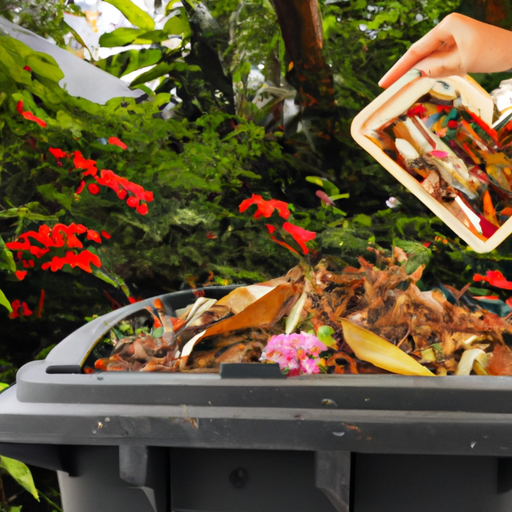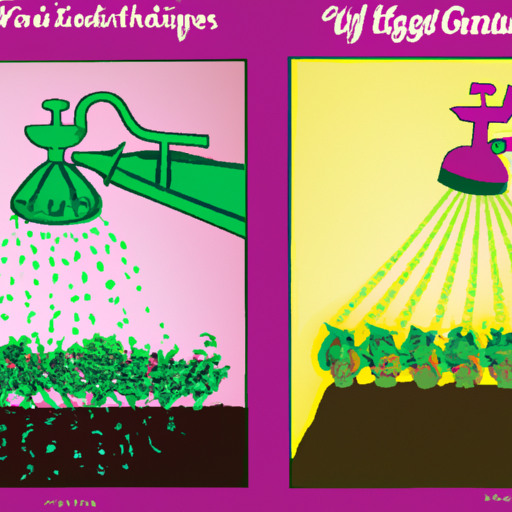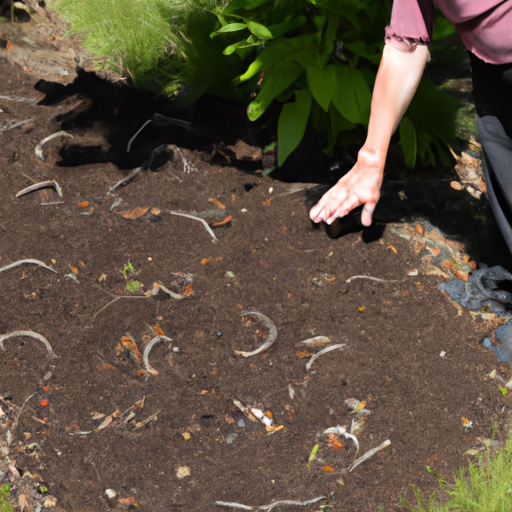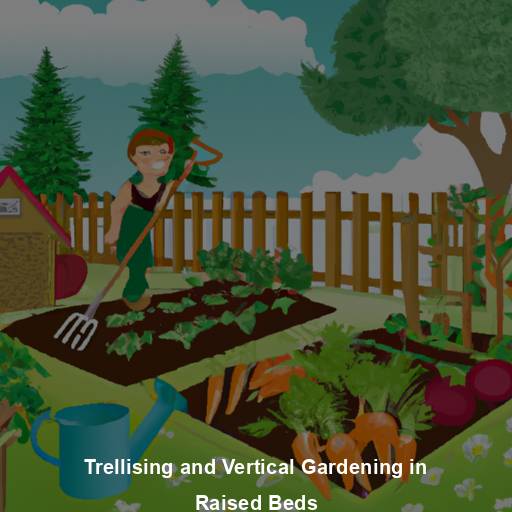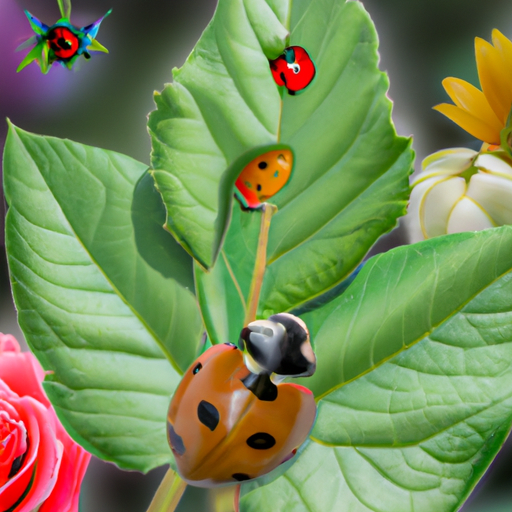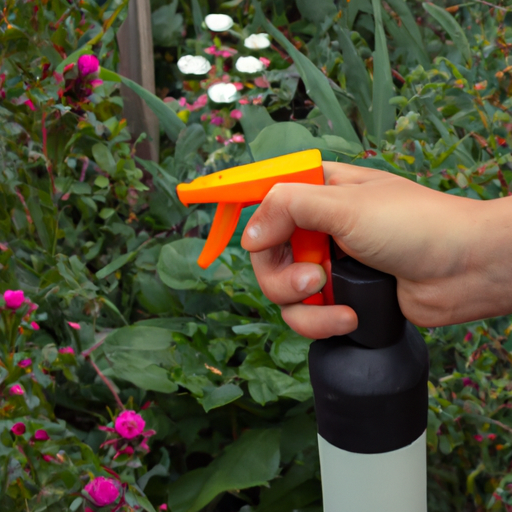Hello fellow gardeners and compost enthusiasts! As a Master Gardener, I am always looking for ways to reduce my waste and create nutrient-rich soil for my plants. That’s why today we’ll be discussing eco-friendly composting tips that will help you do just that.
Composting is an excellent way to reduce the amount of waste going into landfills while also creating a valuable resource for your garden. However, it’s important to compost correctly in order to avoid attracting pests or producing unpleasant smells.
Don’t worry though – with these simple tips, you’ll be well on your way to reducing your carbon footprint and reaping the rewards of a thriving garden. So let’s get started!
Choosing The Right Composting Method
Indoor or outdoor composting? Choosing the right method can be like picking between two different tools in your gardening shed. Just as you wouldn’t use a shovel to prune branches, selecting the wrong composting technique could lead to more work and less success.
Indoor composting is perfect for those who live in apartments or have limited space outside. It utilizes worms and microorganisms that break down food scraps into nutrient-rich soil within a few weeks.
On the other hand, outdoor composting requires more effort but has larger capacity and produces higher quality results over time. This approach relies on natural decomposition through heat and oxygen exposure, making it ideal for people with yards or gardens.
So which one should you choose? It all depends on your lifestyle, living situation, and goals for reducing waste.
Creating The Perfect Compost Recipe
Now that you’ve learned the basics of composting, it’s time to create the perfect compost recipe.
The first step is selecting the right composting container for your needs. You can choose from a variety of options such as bins or tumblers, but make sure it has good air circulation and drainage.
Next, gather your composting materials which should consist of both ‘green’ (nitrogen-rich) materials like food scraps and grass clippings, and ‘brown’ (carbon-rich) materials like dry leaves and twigs. Aim for a ratio of 2:1 brown to green.
Mix these ingredients together well with a pitchfork or shovel every few weeks to ensure they break down evenly. Keep the pile moist but not too wet – think damp sponge consistency.
You’ll know your compost is ready when it looks dark in color, smells earthy, and crumbles easily in your hand. Remember that composting takes time and patience, so don’t get discouraged if it doesn’t happen overnight.
With proper care and attention, you’ll be able to turn your kitchen scraps into nutrient-rich soil for your garden in no time!
What To Compost (And What To Avoid)
Imagine your compost pile as a garden bed, where each item you add is like planting a seed that will grow into nutrient-rich soil. But just like with any garden, it’s important to know what seeds are worth planting and which ones should be avoided.
When it comes to composting materials, there are some common myths out there about what can and cannot be added. Here are the top five things to compost (and avoid) according to Master Gardeners:
– Compostable items: fruit and vegetable scraps, coffee grounds, tea bags, eggshells
– Yard waste: grass clippings, leaves, small twigs
– Paper products: newspaper, cardboard (without glossy coatings), paper towels
– Natural fibers: cotton clothing or towels (cut up into smaller pieces)
– Manure from herbivores such as cows, horses or rabbits
Contrary to popular belief, it’s actually okay to include citrus peels and onion skins in your compost bin – they may take longer to decompose but still contribute valuable nutrients. However, steer clear of meat and dairy products as they attract unwanted pests and emit foul odors.
By following these guidelines for what to compost (and what not to), you’ll be well on your way to creating healthy soil for your plants while reducing food waste at the same time. Remember that successful composting requires patience and attention – don’t get discouraged if it takes some trial and error to find the right balance of materials for your specific setup.
Happy gardening!
Maintaining Your Compost Pile Or Bin
Now that you know what to compost and what to avoid, it’s time to focus on maintaining your compost pile or bin.
Composting troubleshooting is common even for experienced gardeners, so don’t be discouraged if things don’t go as planned at first.
One of the most common mistakes people make when starting their composting journey is not adding enough nitrogen-rich materials such as grass clippings, kitchen scraps, or manure.
Another mistake is not turning the pile frequently enough, which can cause uneven decomposition and unpleasant odors.
To avoid these issues, make sure to add a variety of materials including brown (carbon) and green (nitrogen) elements in equal parts, keep the pile moist but not too wet, and turn it over every two weeks with a pitchfork or shovel.
With patience and consistency, you’ll soon have nutrient-rich compost ready for use in your garden without having contributed unnecessary waste to landfills.
Using Your Compost – Tips And Tricks
Now that you’ve successfully composted all your organic waste, it’s time to put that nutrient-rich soil amendment to good use!
Prepare yourself for an explosion of luscious greenery and vibrant blooms with the creative uses for finished compost. Your plants will be so happy they’ll practically sing their praises in harmony!
If you live in an apartment and think you can’t enjoy the benefits of composting, think again. Composting in apartments is completely doable and there are many resources available to help make it happen.
So don’t let limited space hold you back from contributing to a healthier planet. Get started on using your compost today and watch your garden flourish like never before!
Frequently Asked Questions
Are There Any Common Household Items That Cannot Be Composted?
When it comes to composting, there are some restrictions on what you can and cannot add to your pile.
While many household items like fruit and vegetable scraps, eggshells, grass clippings, and leaves are great for composting, others should be avoided.
For instance, meat, dairy products, and oils should not be added as they attract pests and slow down the composting process.
Additionally, avoid adding biodegradable alternatives such as cornstarch bags or paper plates that contain synthetic materials or have been coated with plastic.
As a Master Gardener, I always recommend researching thoroughly before adding any new material to your compost pile.
Remember, the key is to create a healthy balance of carbon-rich brown matter (leaves) and nitrogen-rich green matter (food waste).
How Long Does It Typically Take For Compost To Be Ready To Use In A Garden?
How long does it typically take for compost to be ready to use in a garden?
This is a question that every gardener asks themselves when starting the composting process. The answer depends on several factors, such as compost turning frequency and the type of composting equipment used.
A Master Gardener knows that patience is key when it comes to making high-quality compost. Typically, it takes anywhere from three months to two years for compost to fully decompose and become usable soil. However, with regular compost turning and proper equipment, you can speed up the process considerably.
Remember, good things come to those who wait – your plants will thank you for the nutritious soil!
Can I Compost Pet Waste, Such As Cat Litter Or Dog Poop?
Composting pet waste is a topic that often comes up among gardeners.
While it can be tempting to add cat litter or dog poop to your compost pile, there are pros and cons to consider.
On the one hand, composting pet waste can help reduce the amount of waste going into landfills.
On the other hand, pet waste may contain harmful bacteria and parasites that could pose a health risk if not handled properly.
One alternative way of disposing of pet waste is through biodegradable bags that can be sent to municipal facilities for proper treatment.
Ultimately, whether you choose to compost pet waste or not depends on your personal preference and level of comfort with potential risks.
How Can I Tell If My Compost Pile Is Too Dry Or Too Wet?
Maintaining optimal compost moisture levels is crucial in creating nutrient-rich soil for your plants. Think of it like baking a cake – you want the perfect balance of wet and dry ingredients to achieve a delicious result.
If your compost pile is too dry, it can lead to slow decomposition and an unpleasant odor. On the other hand, if it’s too wet, you risk suffocating beneficial bacteria and ending up with slimy, unusable compost.
To troubleshoot these issues, try adjusting the ratio of green (wet) to brown (dry) materials or adding water/leaving uncovered respectively. Remember to turn your pile regularly and monitor its temperature as well – this will ensure that all components are breaking down efficiently.
With these techniques in mind, your compost should be thriving in no time!
Can I Use Compost Made From Food Waste In A Vegetable Garden?
Using compost made from food waste in a vegetable garden is an excellent way to add nutrients to the soil while also reducing your overall waste.
Not only does it keep organic matter out of landfills, but it can also improve the health and productivity of your plants.
When using compost in flower beds, be sure that it has been properly processed to avoid any harmful pathogens or weed seeds.
Incorporating this eco-friendly practice into your gardening routine provides numerous benefits for both you and the environment.
As a Master Gardener, I highly recommend giving food waste composting a try!
Conclusion
In conclusion, composting is a great way to reduce waste and create nutrient-rich soil for your garden. By following these eco-friendly tips, you can ensure that your compost pile is healthy and effective.
Remember, not all household items can be composted, so it’s important to do some research before adding them to the pile.
Additionally, it typically takes several months for compost to be ready for use in a garden, but this can vary based on factors such as temperature and moisture levels.
As a Master Gardener, I compare composting to nurturing a plant from a tiny seedling into a thriving organism – with patience and care, you’ll reap the benefits of beautiful blooms or delicious produce.
And just like any living thing, your compost needs attention to thrive. So keep an eye out for signs of dryness or excess moisture and adjust accordingly.
With dedication and effort towards sustainable practices like composting, we can help protect our planet while enjoying its natural beauty.
